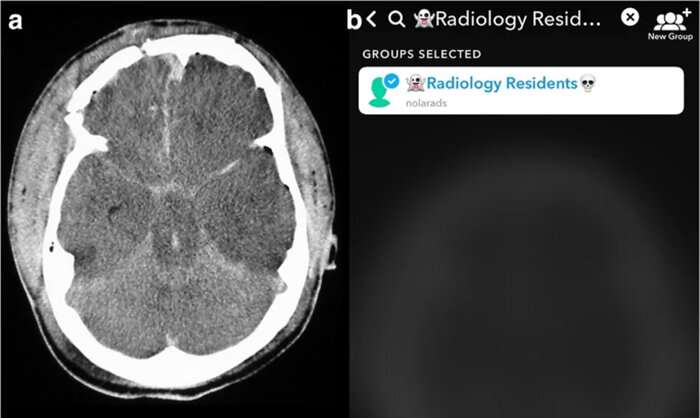Study suggests snap diagnoses may be more accurate

A pilot study conducted by a team of LSU Health New Orleans School of Medicine faculty has found that Snapchat is an effective tool to teach residents emergency radiology. The results are published online in Emergency Radiology available here.The team compared image analysis and interpretation by radiology residents using Snapchat on smartphones with conventional analysis on a single screen in the resident conference room.
“All cases used were diagnoses considered to require emergent, non-routine communication on the order of minutes to the ordering health care provider,” notes Bradley Spieler, MD, Vice Chairman of Research in the Department of Radiology at LSU Health New Orleans School of Medicine. “As such, these types of diagnoses demand prompt imaging recognition as they are considered critical findings which could result in death or significant illness if not acted upon expeditiously.”
The team chose Snapchat, a social media app allowing communication via video and digital images with text messaging functionality, not only because of its popularity with young adults, but most importantly because unlike other image based social media platforms, Snapchat allows for the timing of image visibility by users. The ability to specify the length of time an image is visible to a user (or trainee in this scenario) in rendering an image-based diagnosis creates an intriguing potential for innovation in radiologic curricula, particularly as it relates to assigning a metric to diagnostic performance.
Over a four-week period, LSU Health New Orleans radiology residents, who are all millennials, were shown five emergent radiologic cases using Snapchat and five cases of similar content and duration on a classroom projector. All images depicted diagnoses requiring immediate communication to ordering physicians. Performance was scored 0-2 (0=complete miss, 1=major finding, but missed the diagnosis, 2=correct diagnosis) by two attending radiologists in consensus.
“All residents performed better on Snapchat each week,” says Dr. Spieler, who is also an Associate Professor of Radiology, Internal Medicine, Urology, & Cell Biology and Anatomy at LSU Health New Orleans. “Their accuracy rate was higher using Snapchat than a traditional classroom screen.”
The authors maintain that new challenges presented by the COVID-19 pandemic underscore the need to alter curricular landscapes through innovative teaching methods and connectivity with students and residents. Smartphones and mobile devices are used daily in hospitals in patient care. The comfort level with this technology is high, which simplifies its integration into graduate medical education. Radiology is a specialty particularly suited to visual social media platforms, and it is only natural that the technologically bound craft of radiology continues to push this medium in innovative ways.
Spieler says, “We believe that the results from this pilot study could facilitate a promising and novel training method in enhancing recognition of imaging diagnoses, particularly those of life-threatening nature, which could be applied to the evolving landscape of distance learning.”
Other LSU Health New Orleans authors include Drs. Dane Mackey, Caitlin Henry, Raman Danrad, Carl Sabottke, Claude Pirtle, and Eric Wallace in Diagnostic Radiology; and Dr. Jason Mussell in Cell Biology and Anatomy. Dr. Catherine Batte in the Department of Physics & Astronomy at Louisiana State University also contributed.
Source: Read Full Article
